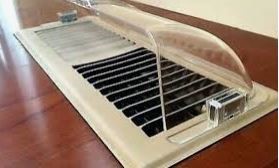Improve Your Indoor Air Quality This Winter
- Home Maintenance
Winter is Here! Follow these quick and easy steps to improve indoor air quality and heat/air distribution during the winter months.
Did you know that indoor air quality can get worse in the winter? According to the U.S. Environmental Protection Agency (EPA) poor winter indoor air quality can aggravate respiratory conditions like asthma and increase a person’s risk of developing pneumonia and other upper respiratory problems. Fortunately, indoor air quality can be improved, here are a few tips:
IMPROVING AIR QUALITY
Service your furnace – Your furnace in an integral part of both air quality and distribution. Furnaces should be serviced yearly to remove dirt and debris. Heat exchangers should be inspected yearly to ensure proper function. Cracked heat exchangers not only impede function but also emit the gases being burned off into your home such as carbon monoxide, nitrous oxide and sulfur dioxide.
Check your ducts – Debris can collect in your wall and floor registers, consider vacuuming out particles that fall in or having you duct work professionally cleaned.
Pay attention to your air filters – Dirty air filters are the major contributor to poor indoor air quality. Check your filters monthly and consider upgrading to higher filtration efficiency. (known as MERV, the higher the number, the better the filtration).
Keep it clean – Be sure to keep all areas of the home as clean as possible. Increase dusting and vacuuming in the winter months to reduce airborne pollutants like mold, pollen and dust mites.
Open your blinds – opening your blinds during the day allows two things to happen. It prevents the trapping of the cold air from the windows allowing condensation build up (which can cause mold or mildew) and allows solar heat gain during the day. Close them at night to keep the heat in.
Did you know that Air Balancing (the process of testing and adjusting your air conditioning system to deliver the right amount of air to each room in your home) will improve air circulation and increase the energy efficiency and overall performance of your HVAC system? A properly balanced system will deliver the right amount of air to each room making the home more comfortable.
IMPROVING HEAT DISTRIBUTION
Check windows and doors for drafts - installing weather stripping or caulking exterior gaps will help keep the cold air out and the heating bills down and rooms more comfortable.
Adjust your ceiling fans - heat rises so reversing ceiling fans will keep your room temperatures more evenly balanced.
Keep your register vents unobstructed - Furniture and blinds directly over supply registers can greatly affect the room temperatures. If you are unable to move the furniture, install vent extenders or diverters.
Adjust your dampers – All supply registers have a built in damper which allows for the control of air flow. If a room is too hot or cold, simply adjust the damper by opening or closing it to control the amount of air.
For more tips on improving air quality and distribution please visit: EPA.gov
You can also download information from energystar.gov
Lenny Jesuele is a construction specialist with a 25+ year record of achievement and success managing residential projects up to and in excess of $1MM and commercial projects up to $10+MM. He is dedicated to delivering exceptional customer service and delivering quality projects as Construction Project Manager at Scioto Properties.
Comment